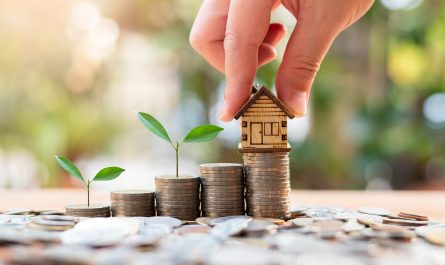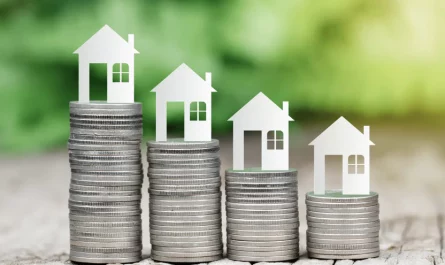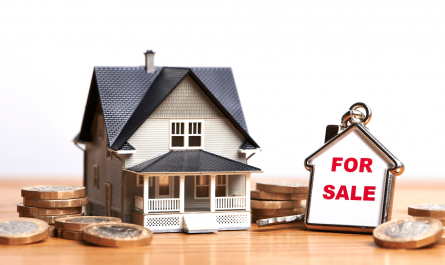Real estate cycles refer to periodic changes in the property market driven by economic, financial, and demographic forces. These cycles typically include phases such as boom, slowdown or correction, recession, and recovery. Investors observe changes in prices, rental yields, vacancy rates, and construction activity. The cycle does not follow a set timetable but generally spans several years. Many factors shape each phase, and understanding these helps investors predict when markets will peak or bottom out. Economic growth, interest rates, and government policies all contribute to these cycles. Recognizing these phases can help you adjust your portfolio and financing strategies accordingly.
Real estate cycles consist of four main phases. In the boom phase, high demand drives rapid growth in prices and rental income. A slowdown or correction follows when growth tapers, and excess supply or rising costs moderate the market. Recession is marked by falling prices and higher vacancies, and finally, recovery signals a gradual return to growth. Each phase has unique characteristics and risks. Investors who study past cycles learn that cycles repeat, although no two cycles are identical. This repetition provides a foundation for planning strategic moves. A clear grasp of these concepts lays the groundwork for making informed investment decisions.
The Economic Drivers Behind Real Estate Cycles

The core of real estate cycles lies in economic fundamentals. Macroeconomic forces such as GDP growth, employment rates, consumer confidence, and inflation directly impact property markets. When economies perform well, job growth and higher wages boost demand for homes. This increased demand results in rising prices and rental rates. Conversely, during economic downturns, falling incomes and job losses reduce purchasing power. Demand wanes, and property prices contract. Many investors use these indicators to forecast market movements and decide when to enter or exit the market.
Interest rate policy is another critical driver. Central banks adjust rates to control inflation and stimulate or slow economic growth. When interest rates are low, financing becomes affordable and boosts both homebuying and commercial investments. This environment typically initiates a boom phase in real estate cycles. However, when rates rise, the cost of borrowing increases, which cools down the market. In this way, monetary policy creates a feedback loop with real estate values. The performance of the financial system, including credit availability and banking conditions, also influences cycles. For instance, tighter lending standards can delay market recoveries. These economic drivers are interrelated and shape the rise and fall of property values over time.
Real estate cycles are not solely the result of one factor. Instead, they are a product of many interdependent economic forces. By understanding these drivers, investors can better gauge market conditions. Historical data and current economic reports help predict future trends. This integrated approach gives you the edge to adjust your strategies in a timely manner. The interplay of GDP, employment, inflation, and monetary policy forms a holistic view of the market dynamics that every investor must consider.
Phases of the Real Estate Cycle
During the boom phase, demand outstrips supply, which causes property prices to rise rapidly. In this phase, new construction is vigorous, and market sentiment is very positive. Buyers and investors are eager to participate, and financing conditions are favorable due to low interest rates. Many investors see quick gains and increasing rental income. High consumer confidence fuels the growth, and speculative investments become more common. However, this phase also carries risks of overvaluation. Many buyers may pay more than a property’s intrinsic worth due to the excitement of booming markets.
Once the boom reaches its peak, a slowdown or correction phase usually follows. At this point, the rapid appreciation of property values begins to moderate. Increased supply from overbuilding, combined with rising interest rates, slows down demand. Investors may start to see a dip in prices. However, the market does not collapse immediately. Rather, there is a period of adjustment where prices stabilize at a lower growth rate. This phase can be challenging for those who bought at peak prices. It often leads to cautious buying and more selective investments. The slowdown serves as a natural correction in the cycle.
Finally, the recovery phase marks the beginning of the next cycle. Economic conditions improve, consumer confidence returns, and interest rates may start to fall. As a result, demand gradually increases, and property values begin to climb again. Investors who enter the market in the recovery phase may find attractive properties at lower prices. Recovery is a time of rebuilding and renewed optimism. However, it is important for investors not to rush in too quickly. Careful analysis is necessary to ensure that the recovery is sustained. Over time, as the market strengthens, the cycle eventually moves back to the boom phase, and the process repeats.
The Role of Market Data and Historical Trends
Historical trends provide a roadmap for understanding the cyclical behavior of real estate markets. Data from past cycles shows recurring patterns driven by economic, financial, and demographic shifts. For example, many studies indicate that property values generally appreciate during periods of sustained low interest rates and robust economic growth. Conversely, when rates rise or economic growth slows, markets tend to correct, resulting in lower property values and increased vacancies.
Investors use quantitative models such as discounted cash flow (DCF) analysis and capitalization rate (cap rate) evaluation to estimate property values in different phases of the cycle. These models incorporate variables like rental income, operating expenses, and interest rates. By adjusting these models for historical inflation and rate changes, investors can forecast future values more accurately. Historical data also helps identify regional patterns. Some markets may show stronger resilience during downturns, while others are more volatile.
Many real estate professionals use economic indicators, such as housing starts, mortgage rates, and employment figures, to predict future cycles. Analysts track these indicators over time and use statistical models to anticipate shifts in the cycle. This data-driven approach strengthens investment decisions and reduces reliance on speculation. Reviewing historical trends also teaches valuable lessons about market timing. For instance, investors who exited during the boom phase sometimes miss out on later recoveries, while those who invest during a recession often benefit when the market turns.
The use of historical data is essential for a balanced perspective. It reminds investors that while market conditions fluctuate, cycles repeat. This historical insight underpins much of the strategic planning that modern investors rely on. It builds a solid foundation for anticipating both opportunities and challenges in upcoming cycles.
Factors That Influence Real Estate Cycles
Multiple factors influence the progression of real estate cycles, and no single element acts in isolation. Interest rates are one of the primary drivers, as they affect financing costs and consumer confidence. Low rates generally stimulate borrowing and buying, while high rates have the opposite effect. In addition, economic growth is key. Rising GDP and employment levels boost buyer confidence and increase demand for housing, while economic downturns reduce purchasing power.
Supply-side factors are also critical. Overbuilding in a market can lead to an oversupply of properties, which may slow down price growth or even cause a decline in property values. Conversely, scarcity in desirable locations drives up prices due to increased competition among buyers. Demographic trends—such as urbanization, population growth, and changes in household composition—can also impact cycles. Shifts in consumer preferences, such as the increasing demand for sustainable or modern housing, alter market dynamics.
Government policies and fiscal measures also play a significant role. Tax incentives, subsidies, and regulatory changes influence the cost of development and property transactions. Policies aimed at stimulating the economy, such as low-interest-rate policies or infrastructure investments, can propel markets into a boom phase. In contrast, tightening lending standards and higher regulatory requirements can slow down the market.
Finally, global factors such as international capital flows and currency fluctuations add another layer of complexity. Global investors often move capital between regions based on relative economic performance and interest rate differentials. These investments can significantly impact local markets and contribute to the cyclical behavior of real estate.
Understanding the interplay of these various factors is essential for mapping out real estate cycles. Every investor must consider how changes in one element might reverberate throughout the market. It is a holistic process that requires attention to detail and a deep understanding of macroeconomic trends.
Recognizing Early Warning Signs
Investors who learn to recognize early warning signs of a market shift are better positioned to adjust their strategies proactively. Early indicators can include rising interest rates, increasing mortgage defaults, and a slowdown in new housing starts. In a boisterous market, signs such as a surge in speculative buying and overbuilding may signal that the market is nearing its peak. When these conditions are observed, cautious investors may choose to reduce their exposure or prepare to exit positions.
For example, if mortgage rates begin to creep up even slightly, it might indicate that the central bank is starting to tighten monetary policy. Other early warning signs include rising unemployment, declining consumer confidence, and slower economic growth. These factors suggest that the boom phase may be ending, and a correction or recession could follow.
Technical indicators also provide clues. A drop in housing starts or an increase in inventory levels may point to a slowing market. Occupancy rates and rental growth trends offer additional insights. Many experienced investors regularly review these metrics to detect shifts as early as possible. They use both quantitative and qualitative data to form a complete picture of market conditions.
Recognizing these signals and responding with strategic adjustments is critical to preserving capital. By staying informed and vigilant, you can plan your moves and avoid costly mistakes. It also allows you to position yourself advantageously when the market enters a recovery phase. This proactive approach is a hallmark of seasoned investors.
Strategies for Investing in Different Phases of the Cycle
Investment strategies must change as the market moves through its cycle phases. In a booming market, many investors opt to sell their properties and reinvest in emerging opportunities. During the boom phase, high prices can lead to inflated valuations. Investors who are cautious may wait for a slowdown or recession before buying at lower prices. Conversely, those who want to take advantage of the momentum may choose to hold on if they expect continued growth in rental income and property appreciation.
During a slowdown or correction phase, buyers often have the upper hand. Lower property values create opportunities to acquire assets below their intrinsic value. Investors may aim to purchase properties at a discount and wait for the market to recover. This is also an opportune time to invest in properties that generate cash flow, as rental yields may be more attractive relative to purchase prices.
The recession phase is typically the most challenging. Cash flow issues and high vacancy rates are common, and market sentiment is negative. However, for the patient investor, this period can offer significant opportunities. Acquiring quality assets during a downturn often means buying at a low point, which sets the stage for substantial appreciation when the market recovers. Risk management and a strong financial cushion are paramount during recessions.
Throughout all these phases, flexibility and responsiveness are key. Investors must adapt to changing conditions and adjust their portfolios accordingly. Diversification across different property types and geographic regions can also help manage risk across the cycle. Each phase offers unique challenges and opportunities, and a dynamic strategy that evolves with the cycle is essential for long-term success.
The Role of Psychological Factors in Cyclical Markets
The perception of market cycles is influenced by both hard data and emotional responses. Investor sentiment often reflects a blend of optimism and caution. During boom phases, optimism can drive prices beyond sustainable levels. The exuberance of buyers sometimes leads to irrational bidding and overvaluation. In contrast, fear and pessimism can dominate during downturns, leading to panic selling and distressed sales.
These psychological factors can magnify the effects of real estate cycles. Many investors become overly confident during booms and overly cautious during recessions. Recognizing these biases is essential for maintaining objectivity. A disciplined approach means relying on data and analytical models rather than reacting emotionally to market changes. Techniques such as stress-testing your portfolio and running scenario analyses can help temper emotional responses.
Market sentiment, as measured by consumer confidence indexes and investor surveys, provides additional context. While these indicators do not dictate market outcomes, they contribute to the overall atmosphere. Investors who can control their emotions and base decisions on fundamentals are more likely to succeed over the long term. In the end, a balanced approach that combines quantitative analysis with emotional discipline is the cornerstone of effective investing across cycles.
Practical Tips for Navigating Real Estate Cycles
For investors seeking to thrive in cyclical markets, several practical tips prove invaluable. First, always invest with a long-term perspective. Don’t be swayed by short-term market fluctuations. Instead, focus on the underlying economic fundamentals that drive cycles. Second, build a diversified portfolio that can withstand different phases of the cycle. Diversification across property types, geographic regions, and financing methods reduces risk.
Third, maintain adequate liquidity. Ensure that you have cash reserves to cover unexpected downturns or opportunities during market corrections. Fourth, monitor economic indicators regularly. Keep track of interest rates, employment data, inflation figures, and housing starts. These indicators offer early signals of changes in the cycle. Fifth, be patient. Timing the market perfectly is nearly impossible, so focus on building value over time. Sixth, use leverage prudently. Avoid overextending yourself during boom phases, and ensure you have a buffer in case rates rise unexpectedly.
Seventh, consider professional advice. Working with financial advisors, real estate agents, and property managers brings expertise and local market knowledge. Networking with experienced investors and joining real estate investment groups can also provide insights that save you money and time. Finally, be willing to adjust your strategy. The best investors remain flexible and adapt their approaches based on market conditions.
By following these practical steps, you can manage risk more effectively and take advantage of opportunities in every phase of the real estate cycle.
The Importance of Data and Research
Sound investment decisions are based on reliable data and thorough research. Historical data on real estate cycles provides insights into how markets have behaved in the past. Analyzing trends such as average home price growth, rental yield fluctuations, and construction rates helps you understand current market conditions. Today, investors have access to a wealth of online data and analytics tools that make research more accessible than ever.
Platforms like Investopedia, Zillow, and local government databases offer detailed and up-to-date economic indicators. Using these resources, you can track key metrics and adjust your investment strategy accordingly. Many investors complement this data with qualitative research by talking to local experts and attending market seminars. Combining quantitative data with qualitative insights creates a comprehensive view of the market. As a result, you can better forecast future trends and make informed decisions. Consistent, ongoing research is the backbone of effective long-term investing. It helps dispel myths and grounds your strategy in reality.
Global Factors Influencing Real Estate Cycles

Although real estate cycles are often discussed in domestic contexts, global factors also play a significant role. Capital flows between countries can affect local markets significantly. For instance, when interest rates remain low in developed economies, international investors may seek higher yields in emerging markets. This influx of capital can drive up property prices in certain regions. Conversely, rising rates in major economies may cause foreign investments to retreat, thereby impacting property values abroad.
Global economic trends, currency fluctuations, and geopolitical events all contribute to the behavior of real estate cycles. Investors who maintain a diversified portfolio across regions can reduce their risk exposure. Understanding global factors can help you identify opportunities that are not available in your home country. International comparisons show that while many developed markets experience stable cycles, emerging markets may be more volatile. However, these volatile markets can also offer rapid growth if timed correctly. In summary, a global perspective is essential for sophisticated investors who wish to capitalize on international trends while managing local market risks.
The Role of Technology in Analyzing Real Estate Cycles
Technological advancements have revolutionized how investors study and interpret real estate cycles. Modern analytics platforms offer real-time data on market trends, economic indicators, and property valuations. These platforms utilize artificial intelligence and machine learning to predict market movements with greater accuracy. As a result, investors can use these tools to forecast upcoming cycles and plan their strategies accordingly.
Online tools provide interactive models where you can input various economic scenarios—such as changes in interest rates, inflation, or employment growth—and see how these factors affect property values over time. Advanced property management software even integrates market data with your specific portfolio, allowing for detailed performance tracking. This technological edge gives you more precision and reduces reliance on outdated methods or subjective judgment. Embracing these tools not only enhances accuracy but also speeds up the decision-making process. In a dynamic market, leveraging technology is essential to staying ahead of the curve.
Real Estate Cycles and Investment Strategies: Bridging Theory and Practice
Theoretical models such as discounted cash flow (DCF) analysis and capitalization rate (cap rate) are widely used to value properties amid changing economic conditions. These models incorporate assumptions about future cash flows, discount rates, and rent growth—all of which are influenced by real estate cycles. When applied correctly, these models help investors understand the impact of cycle phases on property values. However, while models provide valuable insights, they must be combined with practical, on-the-ground knowledge. Market conditions vary by region, and local nuances can significantly influence outcomes.
Successful investors integrate these models into their overall strategy while remaining adaptable. They use theoretical frameworks as guidelines and adjust their tactics based on local market research and current data. This balanced approach bridges the gap between theory and practice. It allows investors to remain flexible and to modify their strategies as market cycles evolve. In practice, no model is perfect, and real-world complexities require continuous fine-tuning of your investment approach.
Investors who master this balance can more accurately forecast market trends and strategically time their investments. By combining rigorous data analysis with local market expertise, you build a robust strategy that adapts to every phase of the cycle.
Conclusion
Real estate cycles are a natural part of the property market, driven by economic fundamentals, interest rates, supply and demand, and consumer behavior. The boom, slowdown, recession, and recovery phases each present distinct challenges and opportunities. Successful investors learn to recognize the signs of each phase and adjust their strategies accordingly. Data and historical trends provide valuable insights, while technology and global perspectives offer additional context.
Investing based on an understanding of cycles requires discipline, patience, and continuous learning. It is important to remain flexible and to update your strategy as market conditions change. Diversification, conservative leverage, and robust risk management are key pillars of a resilient investment strategy.
Understanding real estate cycles is not about predicting the future with absolute certainty. Instead, it is about creating a robust framework that allows you to navigate uncertainties and capitalize on favorable market conditions. As you gain experience, you will learn to distinguish between temporary fluctuations and long-term trends. This insight is critical to building wealth through real estate, as every cycle offers opportunities to enter, exit, and optimize your portfolio.
In conclusion, what every investor must know about real estate cycles is that they are dynamic, interconnected, and predictable to the extent that historical trends and economic fundamentals can guide decision-making. Although these cycles bring both challenges and risks, they also provide opportunities for those who plan wisely and act prudently. With a balanced approach and a commitment to continuous education, you can harness the power of real estate cycles to build a successful, sustainable investment portfolio.



